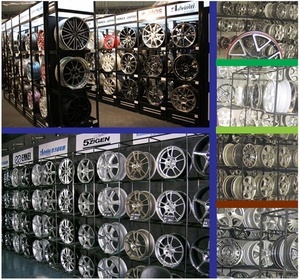One of the more difficult markets to operate in, the business market is legendary for its bureaucracy and for the time taken in making business decisions or purchase decisions. At the same time, businesses buy in bulk and for longer time and even retention is easier when compared with the B2C market. Hence, looking at the pros and cons, it is very important to segment a business market correctly.
This article focuses on how to segment a business market. However, before we decide on segmenting the business market, let us look at some common characteristics of business markets and why selling in these markets is challenging.
a) Complex decision making – The minimum number of people involved in a business decision making are 2-3 or sometimes multiple departments. Business sales are characterized by multiple levels of approvals.
b) Rational decision making – There is no impulse buying in B2B segment. Unlike retail, you cannot sell a machine by keeping it at the entrance gate of the company you are targeting. You might have to give 2-4 demos later on but even then you can be rejected. Decision making is cold and rational where businesses are concerned.
c) Lesser businesses out there – Another issue with the B2B segmentation is that there are lesser number of businesses out there with more number of suppliers. So the power lies in the hand of the purchaser and not the seller.
d) Time exposure – Many companies tie up with a vendor and then keep the vendor for ages. So looking at this factor, business sales becomes too attractive because once you get inside the company as a sales vendor, you might stay there and earn profits for a long time. Recently, many companies have introduced a vendor rotation program as well, thereby reducing the comfort factor of vendors.
e) Technology plays a major role – As business products are complex, technology plays a major role in the decision making. Many companies invest in cutting edge technology to improve their production rates or turnover. Naturally, if a products technology is outdated, the product will not be accepted in the business market.
f) Faster spread – Because the business market is small, once a product becomes popular, it is adopted quickly across the market. All the more reason that the innovative company takes the lead in a B2B market.
So with this background history of Business to business market in check, let us get down to it and learn how to segment a business market?
Table of Contents
Step 1) Selecting the Demography you want to sell to
Demography of a B2B segment differs from that of B2C. The variables of demography in B2B Segment may include the size of the company, the location of the company and how far it is from the manufacturing hub. The number of employees employed by the company, growth over the last 5 years are all various indicators which can be used to categorize various industries based on their demography. So, although we are demographically segmenting the market, the variables of demography are different.
Example – An Automobile parts manufacturer wants to find companies which can buy parts from him. However, he knows that he has limited transportation and beyond a point, transportation becomes too expensive. Hence, he decides that he is interested only in companies which are within 1000 Kilometers of his manufacturing unit. This is his first step in segmenting a business market. He decides that he will look for bulk auto parts buyers in a 1000 kilometer radius. Now these parts buyers might be massive service providers or they may be car manufacturers themselves. He does not care. His USP is that he can produce parts at low cost. So any buyer within that 1000 km radius will do.
Step 2) Need level segmentation
If you look at companies like Caterpillar and other such heavy equipment manufacturers, the world is their oyster. We took an example above of demographic segmentation where the limitation was the geographic area. However, companies which manufacture heavy machinery cannot have such a limitation. Instead, they have to target needs based customers.
So a company which is into manufacturing heavy drills, will probably target all mines and all oil excavation points across the country. If it is a heavy drill company with deep pockets, this company might start exporting their products and targeting multiple countries too. When Dubai was being developed, who do you think supplied the machinery to build such large buildings and structures? These machineries were provided from countries which excelled in large equipments. Such companies cannot use Demographic segmentation and hence they use Need based segmentation, another very good segmentation alternative to finding out your target market.
Step 3) Product type to sell
Each B2b company, like their B2C counterparts, has a good product portfolio. So when they have multiple products in their arsenal, the markets they cater become multiple too. Many B2C companies also have a B2B arm where they supply in bulk and customize the product as per the need of the business buyer. An example of such a company is Bajaj electricals or General Electric.
If we take the example of general electric, they have all kinds of products. But even they will segment the business market based on the product they have to offer. An example is Industrial breakers and switches, which can be sold to all companies altogether. As long as the company requires heavy electricity, they can install the heavy breakers and switchers of General electric. However, another product in their arsenal is motors or busways. Now these products can be installed in companies which require customized machinery or which require movement of material. So, once General electric has decided a segment based on demography or need, they need to decide which products to sell to these markets. The market of Switches and the market for Busways or motors is very different.
In the above example, if the Auto parts manufacturer has decided that his capability is only to provide the parts in a 1000km radius, then further ahead he can look at his product portfolio, and segment the market based on the parts which he will be providing to every buyer or the parts which he will be actively pushing to the top 10-15 buyers of automobile parts in the territory. Thus, besides having a demographic market to cater to, he has a product in hand with which he can segment the market.
Step 4)Determining the Purchasing behavior
Although everyone needs sales and profits, there are some companies you just don’t deal in. This is because of the purchasing behavior of these companies. Ideally, a business owner should always find out from the market what is the purchasing behavior of the company he is targeting. Let us take example of 2 cases where it is undesirable to deal with the company.
Time taken to purchase – A perfect example of too much time taken for purchase or time taken for payments are Government firms. First, there is rampant corruption where you need to give some money to someone to get your order or even your payments. Secondly, the time taken for quoting, purchase and finalisation is too much. A businessman who has a growing business will not like to directly supply to government. Alternatively, there might be companies which are specialised in government orders. In this case, there can be a co operation between the manufacturer and the government supplier so that the supplier takes care of payments, process and the risk involved and the manufacturer gets his money immediately on sale.
Credit demanded – Another reason to cut short of companies to target is the credit duration demanded by the companies. Remember, this is a buyers market and there are only few top companies which are in power. So most companies have to agree with the buyer. If the buyer is demanding 30 days credit (meaning he will pay 30 days after receipt of material) then it is completely upto the supplier whether he wants to supply or not. Suppliers who have huge working capital and deep pockets (and have confidence that the company will pay up) can definitely take part in such deals. But other manufacturers might thing that the purchasing behavior is not as per their liking and completely give the deal a miss.
So from the above 2 examples, we can determine that there are various reasons that the purchasing behavior of the company might not be suitable due to which there may be no deal between buyer and seller. In such cases, it is always preferable to determining the purchasing behavior of a company BEFORE you approach them for sales. It is an important step in segmenting a business market.
Step 5) Situational purchase
There are times when the situation demands to relax all other rules so that a supply can be made. Let us understand this with an example
If there is a company which wants 10000 units from the supplier, then the supplier will definitely consider the offer. The company might be outside the limits of the supplier or it may have a poor credit ratio. But all this can be discounted and a deal stuck with a win win situation between the buyer and supplier. This is mainly because it is a one off situation where such a bulk purchase is being made.
For example – Amul Ice cream has a habit of buying above 1000 freezers before the summer season. Same goes for Kwality walls. Each and every freezer company tries to become a part of this so that they can get the massive order. The Size and Quantity of order is a situational purchase, where all other factors are disregarded because of the turnover involved. Another variable to a situational order is the urgency of the customer. If customer needs an urgent delivery, premium delivery charges and advance payment can be demanded from the customer.
So although there are various criterias for segments, a company which wants to penetrate the market, should look for such situations to target. Wherever the purchase is bulk or there are multiple companies involved, the newly launched brand should target such deals. Slowly but surely, the brand recall of the new brand will increase and it will get the turnover it wants.
The above are the 5 steps to segment a business market. The market is very dynamic in nature and is complex at the same time. So there is no tried and tested method in the market. There are various types of suppliers and manufacturers in the business market, some who target only the larger companies whereas others who want to get a toe hold in this market. Depending on your own position and market share, you can decide which type of business segmentation works well for you and use the same to segment a business market.
Liked this post? Check out the complete series on Segmentation



